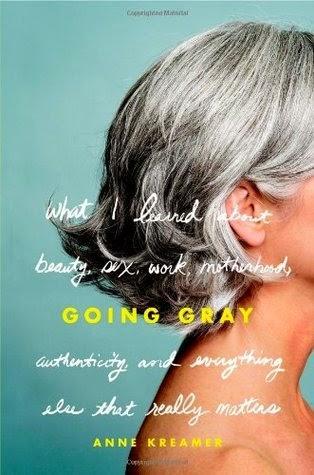
Photo by Roberto Trm.
One of the physical markers of age is the appearance of gray hair.I went through that rite of passage in my late 30s. When I bought my first house and gave birth to my two children and decided to stop pulling my gray hairs.
Did these big life events bring about the gray? It's difficult to know for sure.
I've been coloring my hair for over 30 years (minus the five years I was either pregnant or nursing). Recently I decided to stop coloring away the gray. I'm only 52.
Why am I going gray at midlife? Many midlife women color away the gray. Many women in late life color their hair. Why would I want to look older?
I have a handful of reasons.
1. Chemicals. I am starting to get nervous about using chemicals on my scalp for any longer. Thirty years already seems like a long time. I could examine the existing research on this, but I admit it's a gut reaction against using any more chemicals than absolutely necessary.
2. Credibility. I perceive people with physical markers of aging as having credibility that comes with decades of experience. I want to embrace the fact that I've been spinning on this planet for over a half century.
3. Peer Group. I am a gerontologist who affiliates regularly with older adults. I'm becoming acclimated to seeing people with gray or white hair, and I think they look good. In these social circles, I am in the minority with my colored hair. Throughout my life, I have changed my hair by the cut, color and styling to look more like my social peers.
4. Economics. OK, I'm getting ready to sent my kids to college, and every penny seems to count. It's expensive to color my hair. And time consuming.

Published September 10, 2007
What is my natural color? I have no idea if my hair is gray, white, ash, or even brown (light, medium or dark?) with a few salt-and-pepper streaks of gray. I imagine that it will take a couple of years to transition.In the mean time, I can reread Anne Kreamer's 2007 book Going Gray: What I Learned about Beauty, Sex, Work, Motherhood, Authenticity, and Everything Else That Really Matters.
Her book includes meditations, interviews, statistics, analyses, and neurotic ramblings about what the color of our hair means for adult women of all ages.
Kreamer focuses more on mature women: i.e., those 50 plus, but she also makes comments about women of all ages and even touches a bit on the significance of men's hair color.
It makes me a bit nuts to focus this much on an issue of appearance. However, I concede that people do judge us on how we look.
I studied rhetoric in graduate school. We influence people's perceptions of us not just by what we say or what we do but by how we look. People interpret our hair color when they are determining our social significance.
Annoying, but true.
It will be interesting to measure changes in how people respond to me as I go gray. Going gray can be traumatic for some women, even when they choose it. I actually just joined a closed Facebook group for women going gray. They give each other emotional support for daring to go natural.
That being said, I do want to acknowledge my support for women who continue to color their hair through midlife and even into late life. I don't believe in dictating rules for how women should dress, act or groom themselves according to their age. I can't control how others will respond, but I can control my response to matters of style: Rock on with your fabulous self! And if you want to cheer on rule breakers, check out the women featured in the book (blog and film) Advanced Style.
Fair warning to my friends and relatives. I may very well start carrying a notebook for recording statements others make about my changing hair color. I'm doing it in the name of (social) science.
Speaking of taking an academic approach to things. . . . As a retired English teacher--include a side bar on the use of gray vs. gray.
The Grammarist explains that gray is the original spelling, but that Americans adopted "gray" and favor it 9 out of 10 times in use over time, as demonstrated in this Ngram chart. The search criteria shows the frequency of these two words in print as they appeared in American publications from 1800 to 2000:
Last month, I published a post about the Beale estate, Grey Gardens. But as you can see with the above chart, "gray" is the preferred variant in the US. Hence, my use of "gray hair."
Related:
When Does Midlife Start and End?
Fight, Resign or Embrace?
Ugly Ducking Becoming a Silve Swam via the Gym

